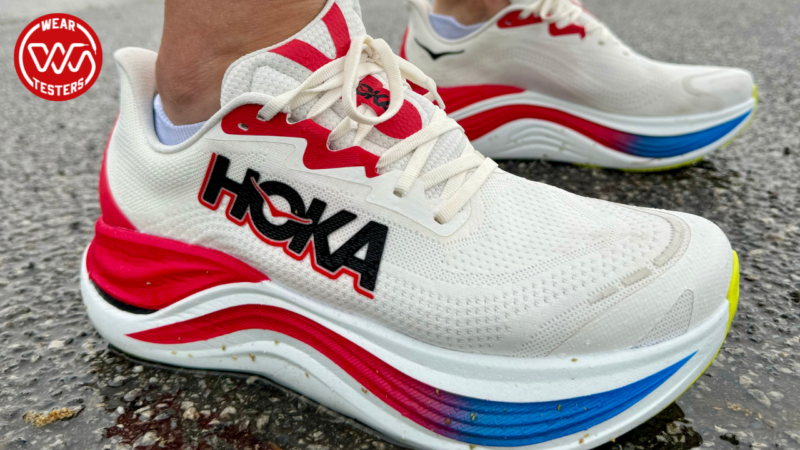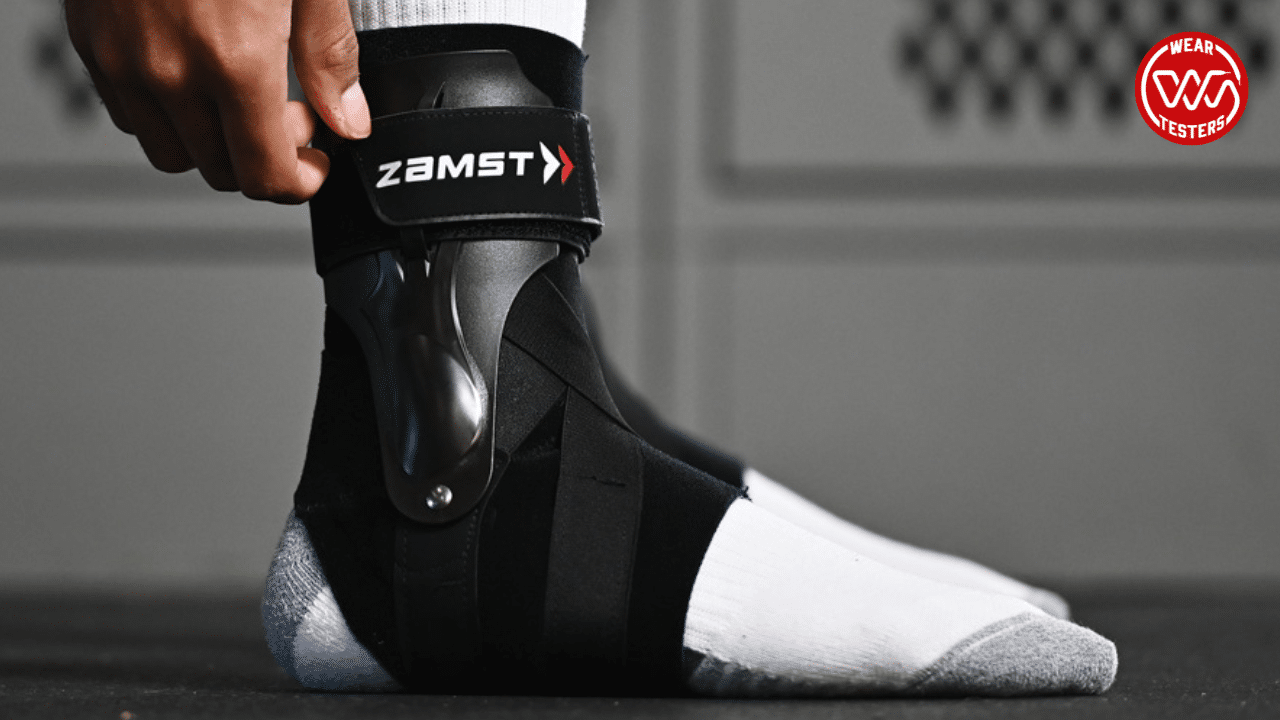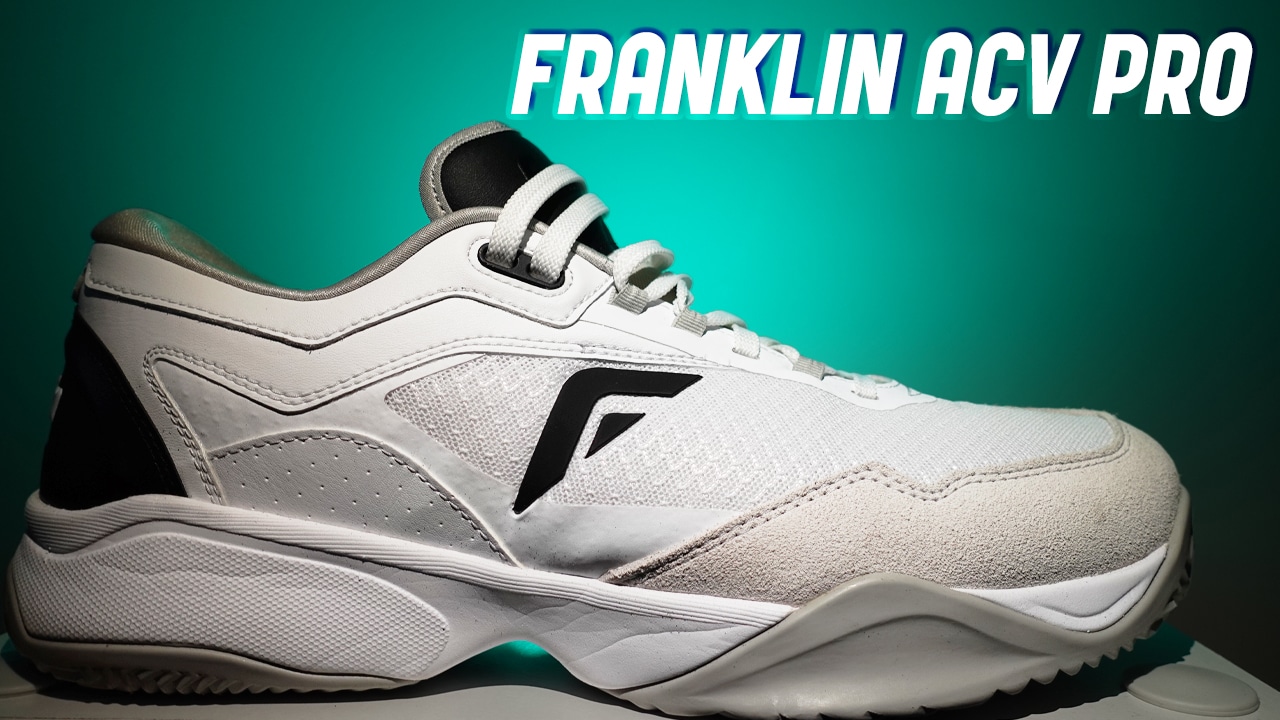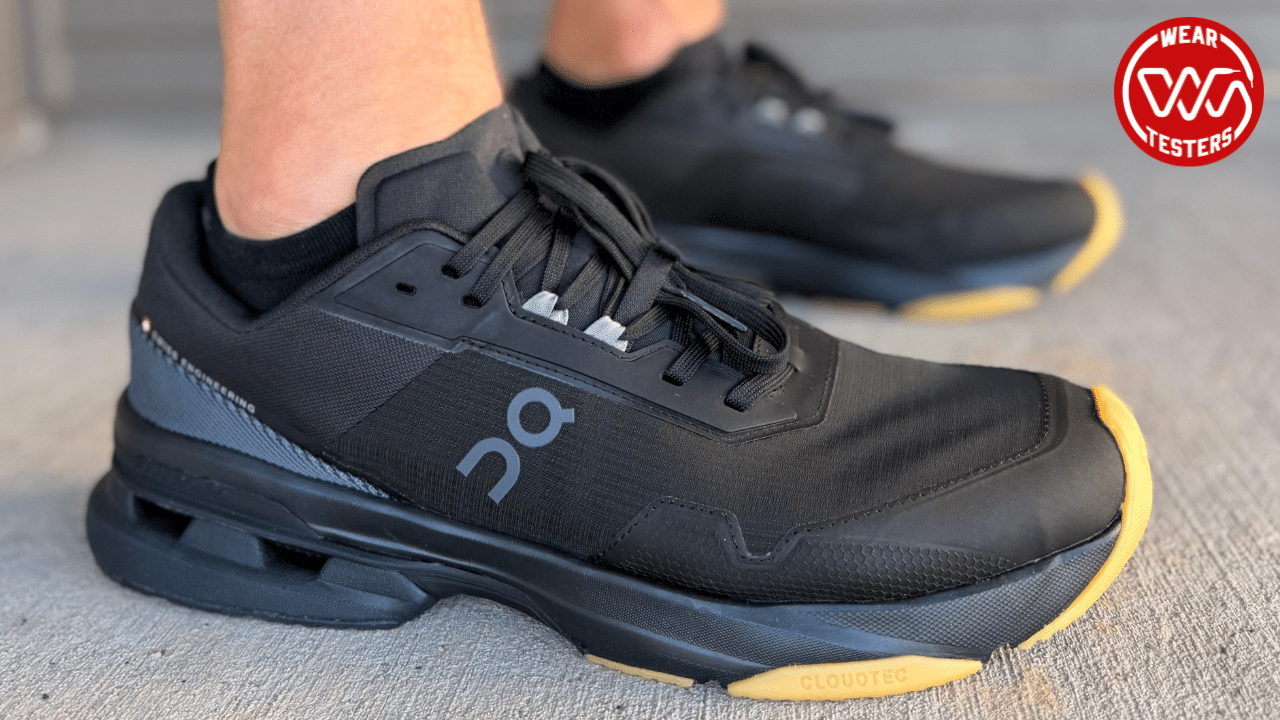Since its founding in 2009 Hoka has been a leader in super puffy, marshmallow soft shoes. I’m sure company leaders have looked on with jealousy as various other running brands have caught up and created even fluffier shoes. I imagine the executive team gathered around a huge conference table on a dark and stormy night vowing to retake Hoka’s rightful place as the industry’s cushioning champion. And out of that emergency meeting arose a shoe the company was destined to create, the Hoka Skyward X.
Sometimes a little competition is a good thing. I think in the case of the Hoka Skyward X, the new super trainer category got Hoka to reach deep down, embrace its founding DNA, and unleash something so thick and cushy that even jaded running reviewers weren’t ready for it.
But…just because the Hoka Skyward X has a monstrous 48mm of foam in the heel doesn’t mean it’s automatically a great shoe. It still has to pass the test and perform on the roads to get a spot on any of our Best Running Shoes lists. Will it? Let’s find out.
Hoka Skyward X
Release Date: April 2024
Price: $225
Weight: Men’s 11.3 oz., Women’s 9.2 oz.
Drop: 5mm
Sizing: True to size
- Rundown: The Hoka Skyward X easily takes the title of the poofiest marshmallow of a shoe that Hoka makes. But is it a great running shoe?
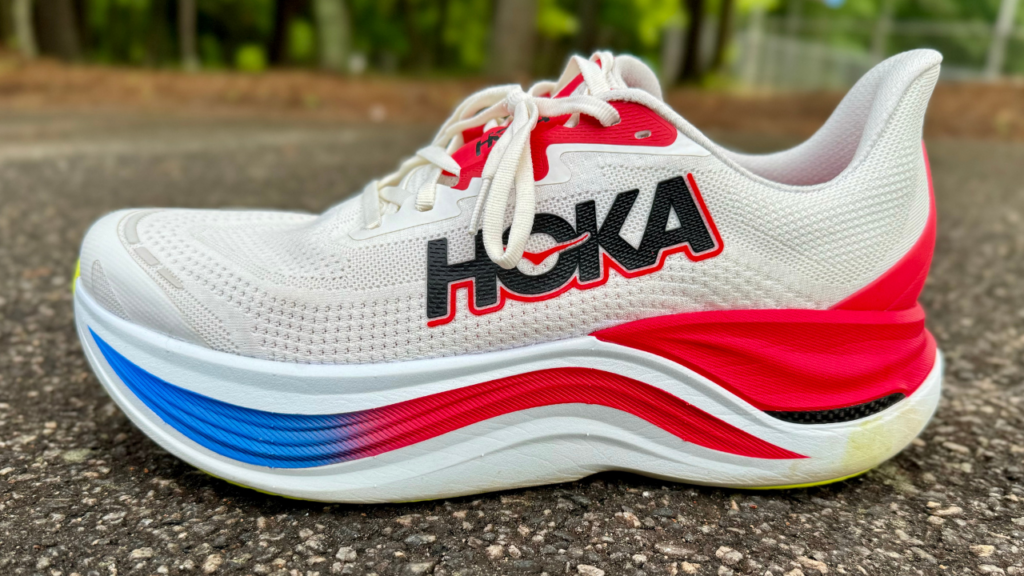
Performance
The midsole setup of a supercritical EVA frame topped with a suspension bridge like carbon fiber plate and a layer of Peba delivers perhaps the plushest feeling underfoot currently available on the market. Running shoe companies often joke about running on top of marshmallows but Hoka has come the closest to that feeling (assuming marshmallows could also provide some bounce alongside the cush).
I knew the ground was somewhere underneath me but I rarely felt the unforgiving cement through the vast layers of foam. If your priority is avoiding the harsh response of asphalt, the Hoka Skyward X can deliver that sensation.
The Skyward X is also going to give every wearer close to two added inches of height. My size 12 adds over two inches to my 6’6” frame. If you’re looking to see more eye to eye with that special someone at run club, very few shoes can deliver the extra height of the Skyward X (the adidas Prime X 2 Strung is the only other shoe capable of such great heights).
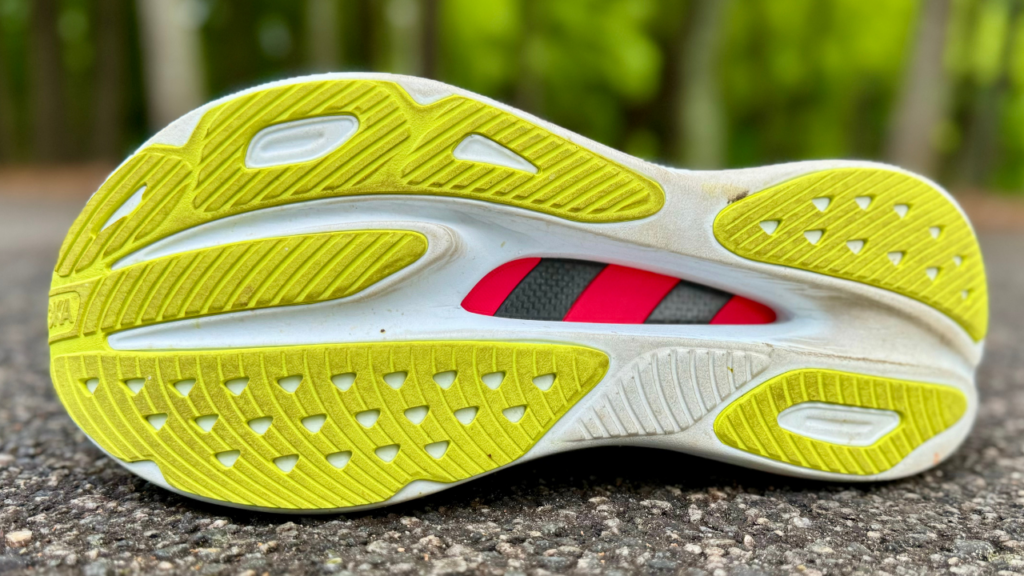
The outsole grips well even in wet conditions and is pretty thick rubber for a Hoka shoe. I don’t anticipate any durability issues like the ones seen with the softer rubber Hoka uses on many shoes. This outsole is built to last equal to the ginormous stack of foam it sits below.
The upper is a flat knit, which in practice feels similar to engineered mesh, so it’s fairly standard as far as running shoes go. The tongue is thick and plush thus preventing any lace pressure. However the tongue isn’t gusseted and thus the tongue gets slippy on runs. This does get annoying on longer runs so I wish Hoka had locked it into place. It’s something that needs to be fixed if there’s a Skyward X 2.
But Hoka did lock down the foot. The lacing system features two loops around the midfoot that connect to harness pieces that are secured to the strobel board beneath the insole. This is a tried and true tactic to increase lockdown and stability. It’s done here to help counteract the inherent instability with such a huge midsole. And it works. Cornering is more secure than expected and the harnesses keep you cradled on top of the footbed.
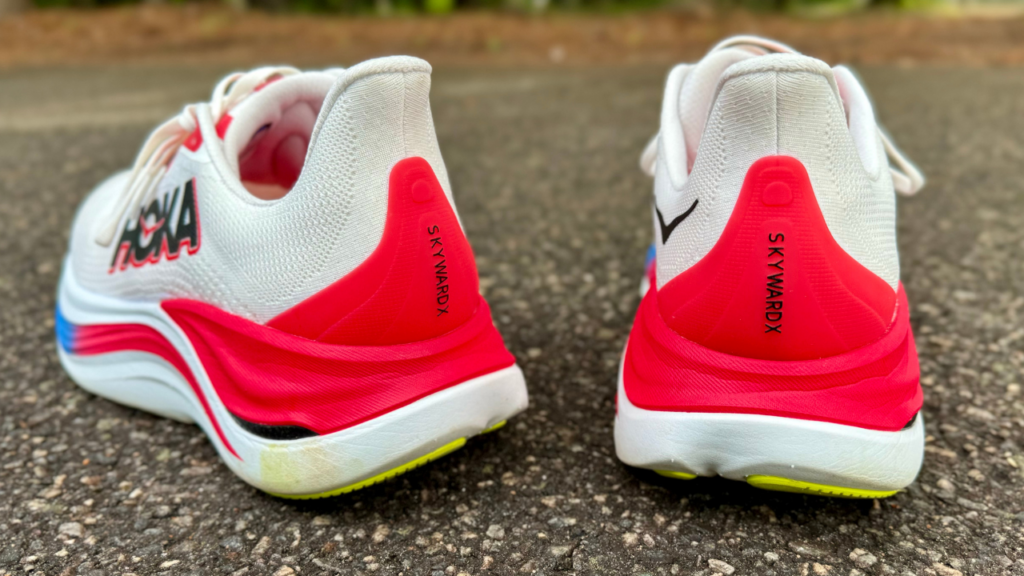
The beefy, rock hard heel counter also works to stabilize the foot along with a more firm piece of foam Hoka is calling the Deep Active Foot Frame. Keeping something with this much junk in the trunk stable is a huge undertaking and all of these pieces help. Even then, it’s not always enough.
The Hoka Skyward X feels more built up along the medial side of the shoe. This is great for protecting overpronators but supinators that land alongside the lateral side of the shoe may find themselves pushed even further laterally. This sensation is felt most acutely when walking. As you speed up in the shoe, it subsides.
But again, stability is an issue, so if you have weaker ankles and don’t like shoes that make you take on more of the side to side stabilization work, the Hoka Skyward X isn’t for you. Hoka is doing what they can, but the shoe is so plush and so big that there’s a limit to the effectiveness of their efforts.
Hoka chose to make this big, plush, and soft over everything else. A runner that prioritizes that type of experience will be in heaven.
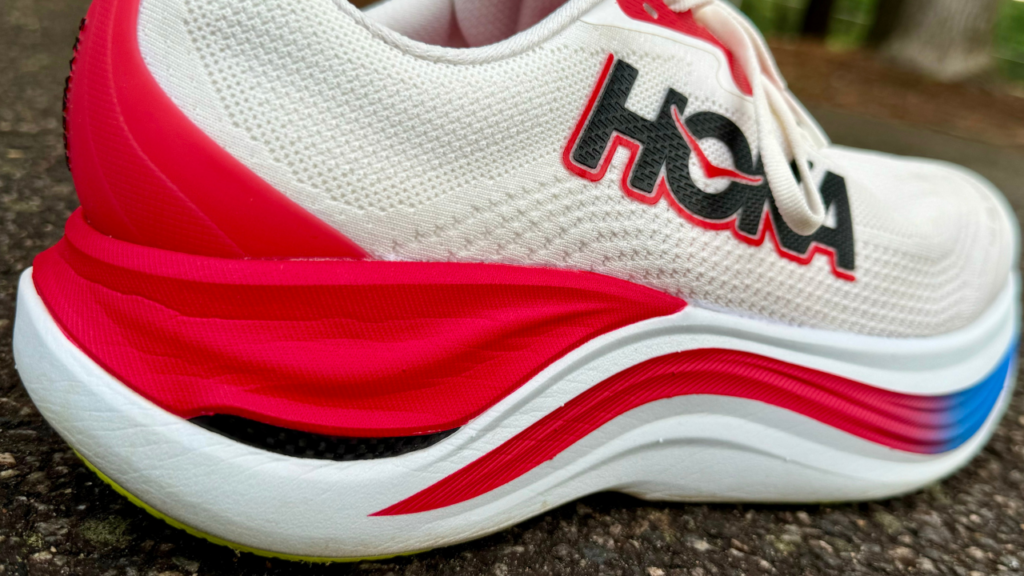
Pros
- Fluffy, plush cushioning that’s protective and bouncy
- Enough foam underfoot to add 2 inches of height
- Midfoot lockdown via built in harnesses
- Smooth, natural rocker motion
- Durable and capable outsole
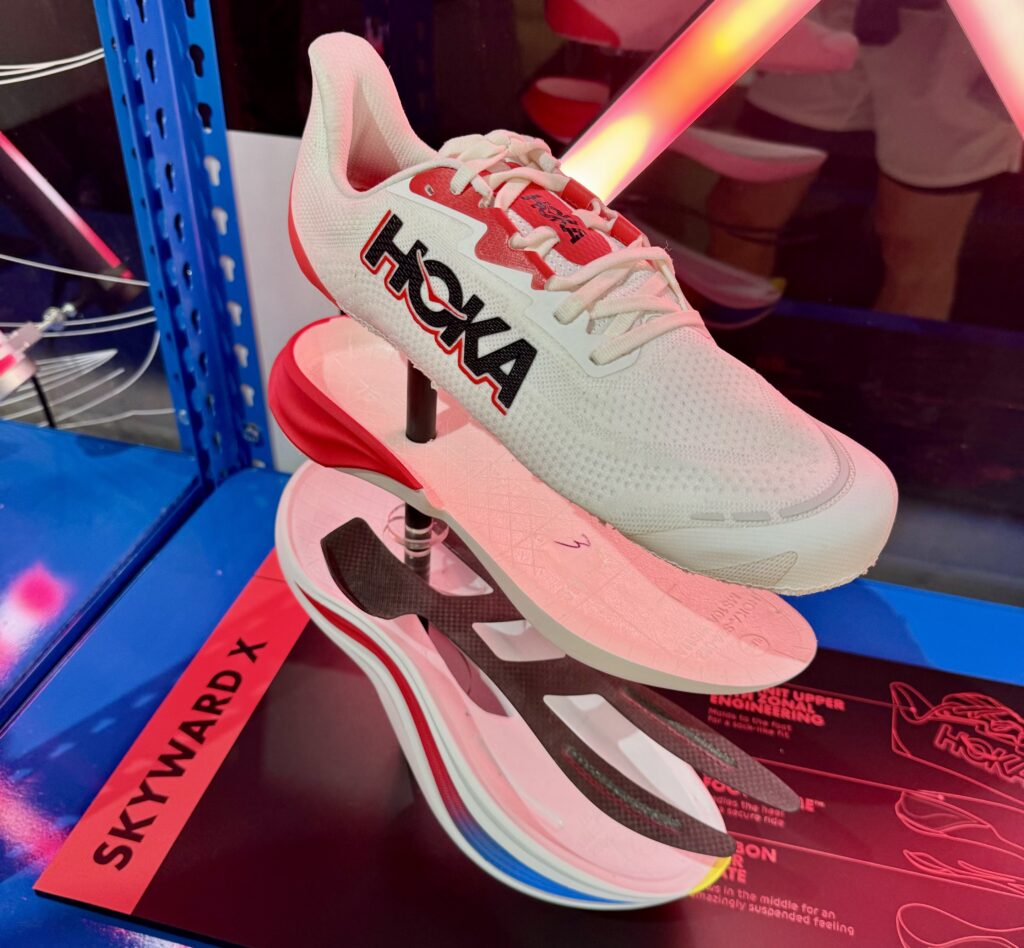
Cons
- Stability, especially for supinators
- Slippy, non-gusseted tongue
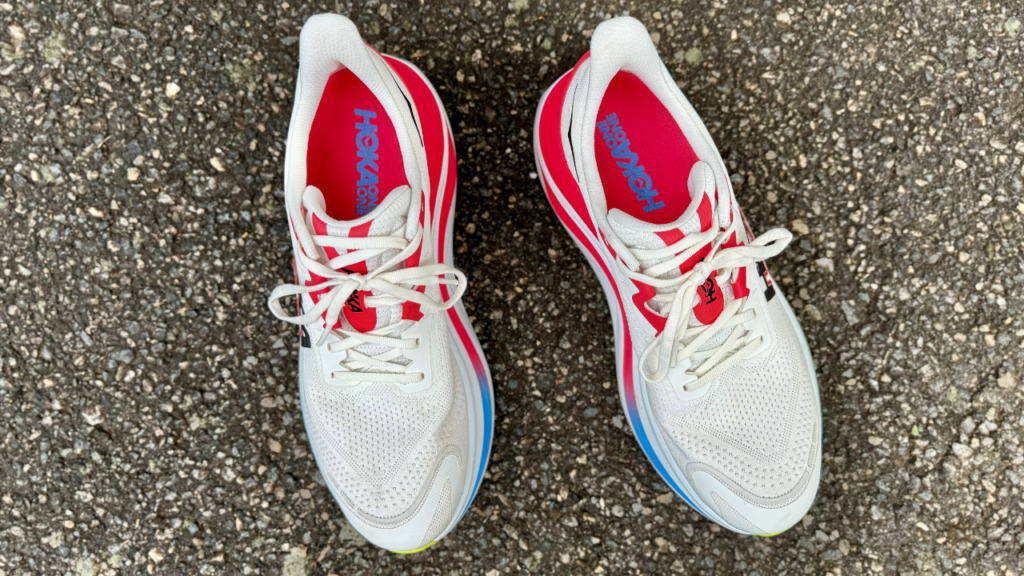
Is the Hoka Skyward X wide foot friendly?
The Hoka Skyward X tries to be wide foot friendly but doesn’t quite achieve the required result. The forefoot is spacious and I had room to wiggle my toes but the heel and midfoot are pretty dialed in to prevent stability issues. Anyone with a wide heel or midfoot should likely look elsewhere as going up a half size isn’t a great option with a shoe this big.
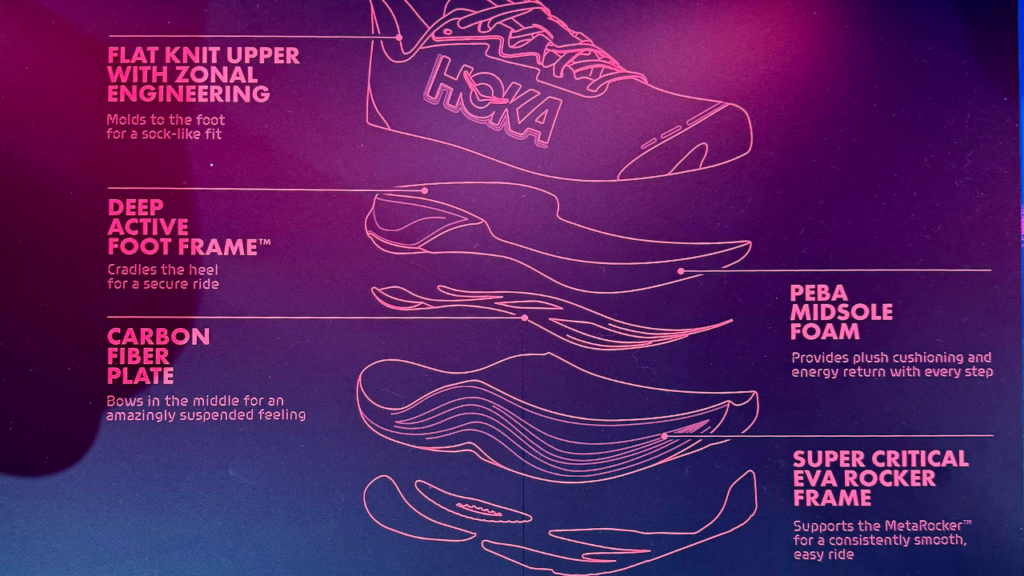
Is the Hoka Skyward X worth $225?
The technology in the Hoka Skyward X justifies the $225 price tag. Tons of high end foam, a thoughtfully designed carbon fiber plate, a durable outsole, and a bunch of stability features show that Hoka poured a lot of money into this shoe.
Its sweet spot is long runs and easy runs. We won’t see many people trying to pick up the pace in these chonky, weighty shoes. For those in a marathon training block running mostly on pavement, the $225 will be well spent. It’ll save a bunch of wear and tear on tired legs. That use case easily justifies the purchase price. Other use cases may not get the same value out of the Skyward X.
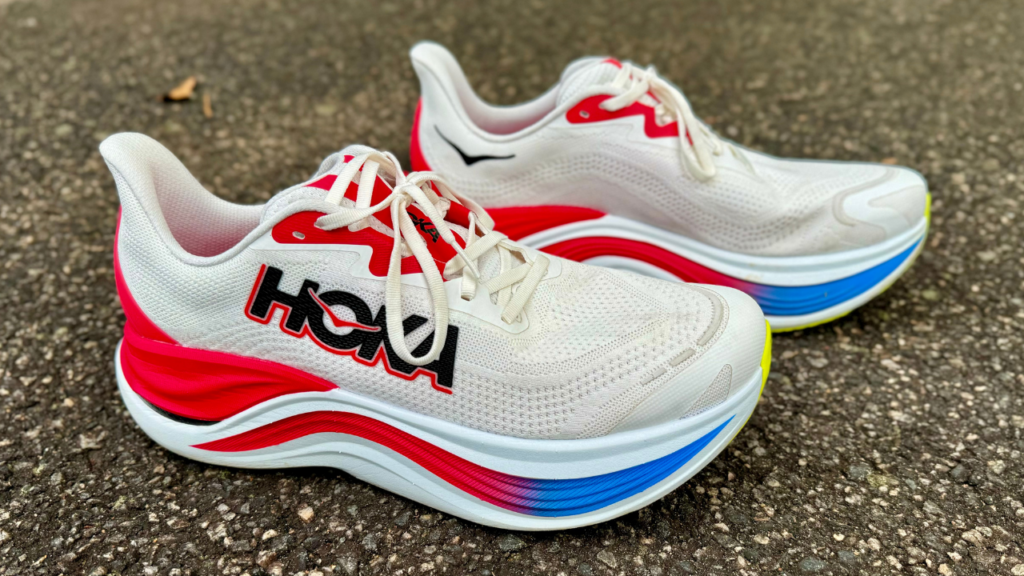
Hoka Skyward X Summary
The Hoka Skyward X is a poofy, soft, and bouncy marshmallow of a shoe that focuses on maximum cushion above everything else. Anyone that prioritizes cushion and has the mindset of “the softer, the better” should plop down the $225 and buy the Skyward X. It’s a one of a kind experience that’s unapologetically the Hoka ethos taken to the extreme.
How does the Author Run?
Drew Whitcomb (age 42, 6’6″ 195lbs): Runs daily with a once a week rest day. Runs a lot of miles due to testing needs and a growing affinity for long-distance races. Regularly competes in marathons, half-marathons, 10k, and 5k races.
Disclosure
While Hoka did send a pair of the Hoka Skyward X to facilitate this review, the company had no involvement in this review, didn’t receive an advance look at it, and have not attempted to influence it.

